What can be more cheerful than seeing a flower nudging its way out from
under the last remnants of late winter or early spring snow? This
phenomenon occurs anywhere there is snow, from cities to remote
mountains.
It always brings a smile to my face.
On this, our last morning in the Bighorn Mountain region,
I'll present some photos I've taken of the wildflowers during
our visit here. It's amazing to me how the seeds or roots of these beautiful
plants can survive the harsh mountain winters here. Some may look
delicate, but they obviously aren't. I think that's another one of
life's metaphors, isn't it?
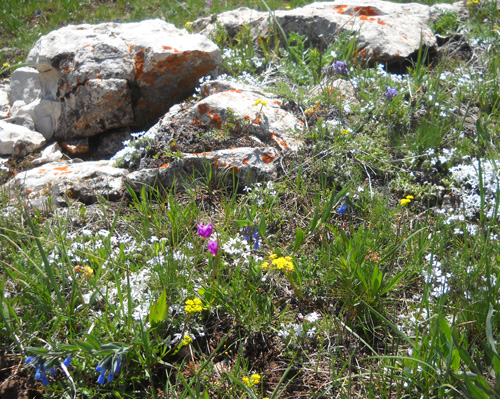
June is still early spring for this area in northern Wyoming, especially up in the mountains
at 7,000-8,000 feet where I took most of these photos. I haven't seen
any flowers in bloom above 9,000 feet yet; they're still under a
blanket of snow.
As soon as the snow begins to melt and some warm sunshine reaches the
soil, little plant shoots start popping up. The
next photo is from the 8,500-foot level on the Riley-Dry
Fork Ridge this past week:
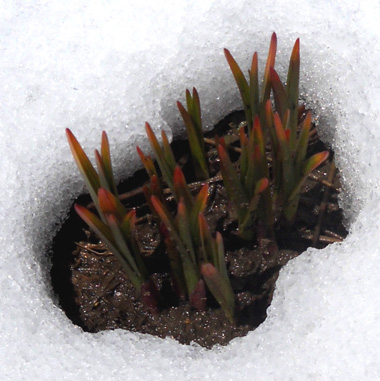
One of the best years for wildflowers before and during the Bighorn race was in
2006. That was an early spring and the flowers were the most prolific
that I can remember in recent years. There were tons of pretty blue
Lupines all over the ridges between 7,00-8,000 feet in early June that
year (next photo)
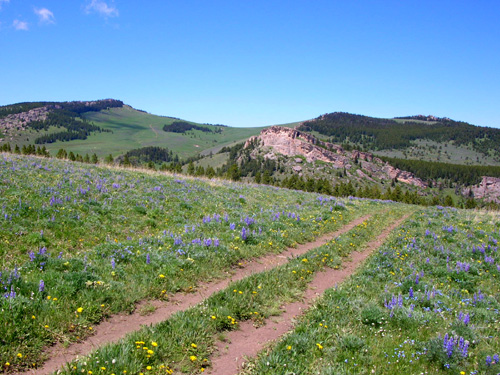
Lots of Lupines on Horse Creek Ridge (photo taken
6-5-06 on the Bighorn race course)
but the only ones we've seen in full bloom so far this visit --
even during the third week of June -- were in the Tongue River
Canyon at about 5,500 feet elevation:
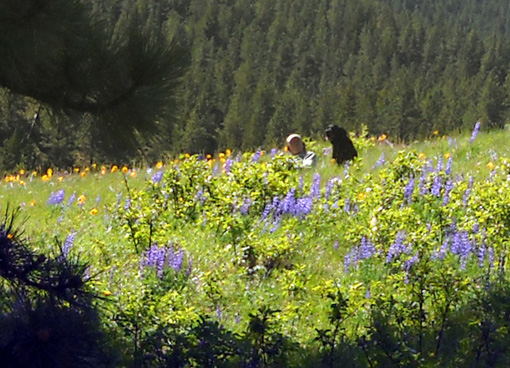
Above and below: Jim and Cody hunker down in a field of
Lupines and Arrowleaf Balsam Root.
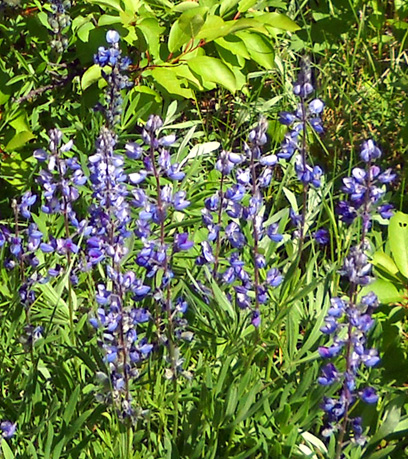
I finally saw some Lupines near the Head of the Dry Fork at about 7,650
feet elevation during the Bighorn race on June 19 but they hadn't opened
yet:

This year seems to be a rather late spring for the area. I joke about
being in the Dandelion Time Warp most of the year as we travel around the
country. We like eternal spring weather, so we choose locations in the summer
that are cool (like the Rockies) and destinations in the winter that are
warm (like southern Arizona and Texas).
We almost beat even the dandelions to northern Wyoming
this year! The only ones we've seen are in the Dry Fork drainage near Cow Camp
in the 6,500-foot elevation range. It's too early even for them at the
higher elevations.
In the last two weeks we've seen more and more flowers and other plants
pop up at the edge of snowdrifts:
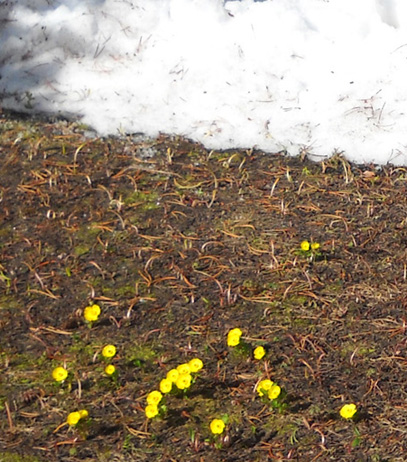
It's cool to see the changes in such a short time, as in the
Riley loop entries I featured with the dramatic change in snow
levels. That affects the number of wildflowers and other
plants that reappear each spring, too.
One of my favorite flowers in this area is the Pasque Flower.
Some were just beginning to emerge when we got here two
weeks ago:
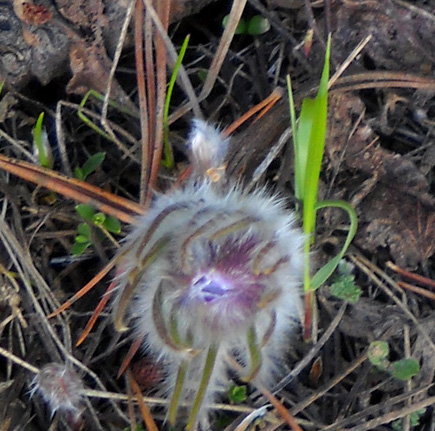
They start out as soft little balls of fluff (above), then get a
few
inches taller and gradually unfurl their bluish-purple petals,
revealing numerous bright yellow or gold stamens in the center:
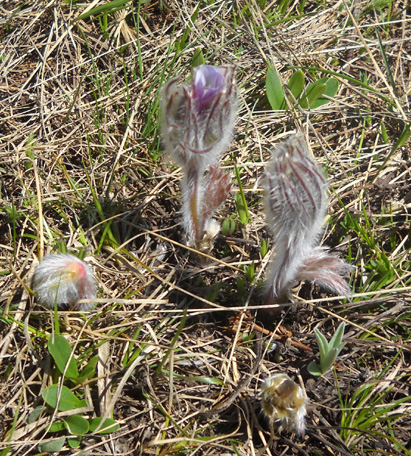
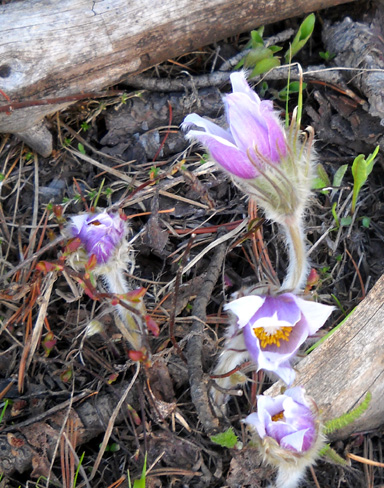
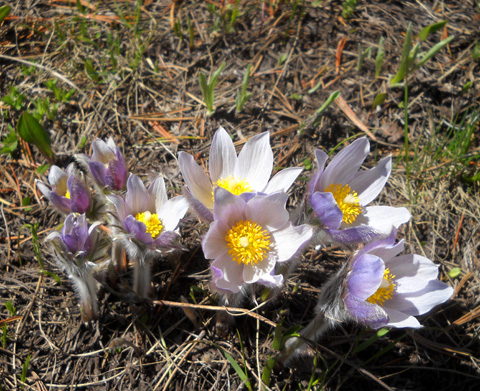
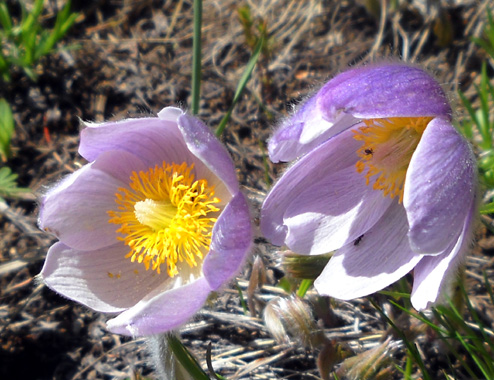
Sometimes you'll see just a few Pasque Flowers; other
times they grow in profusion in one area. The next bunch is
just part of a larger clump growing near some sage brush along
the trail between Freeze Out Ridge and the Upper Sheep Creek aid
station:
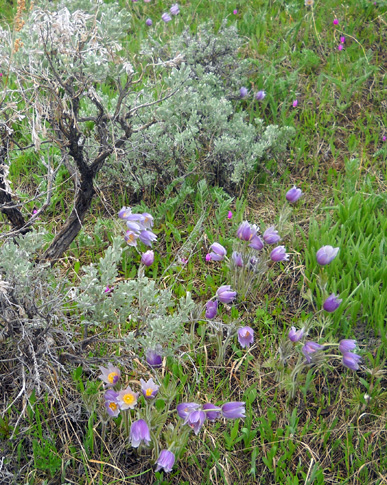
That trail is a good place to see a variety of flowers during
June. Here are some others I saw in that area on June 9:
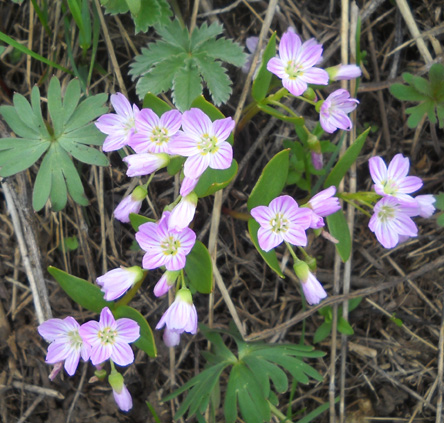
Wild Geraniums come in several different colors
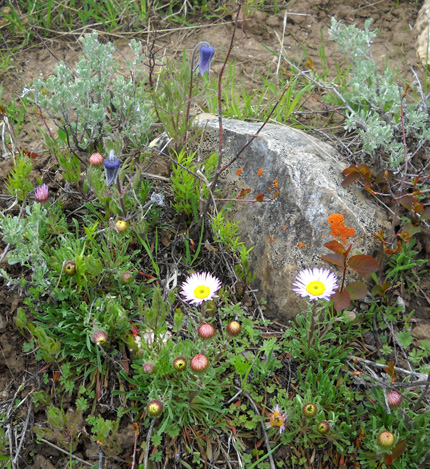
Most of these flowers in the daisy/aster family
(above) are still tight
buds
but a couple have opened.
The tall blue flowers are Vase Flowers (above and below).
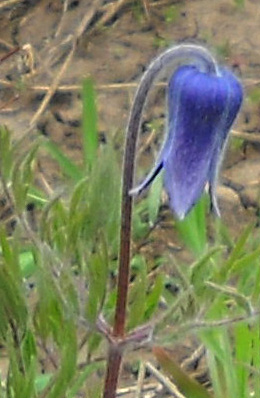
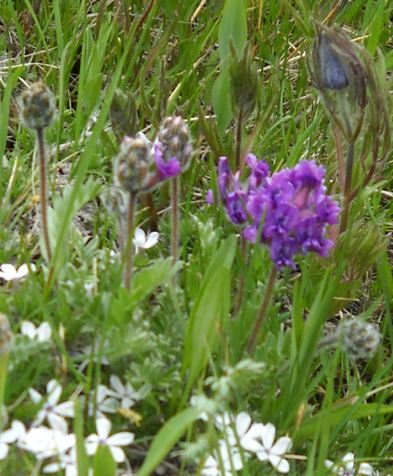
White Alpine Phlox, a type of purple Penstemon,
and one taller blue Vase Flower
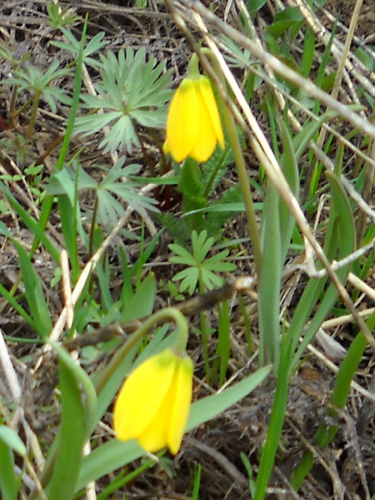
Yellow Bells
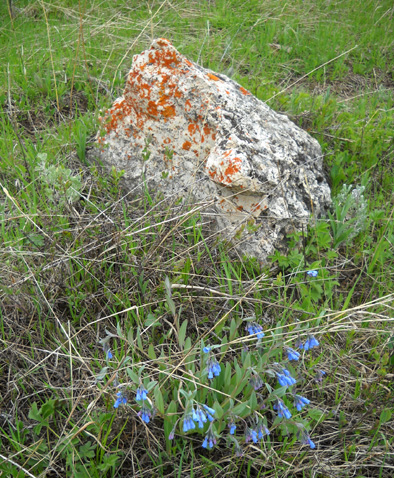
Mountain Bluebells (above and below)
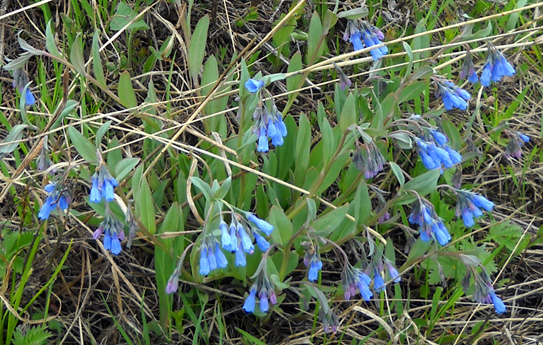
Here is another pretty montage of flowers along this trail,
followed by two close-ups of the blossoms:
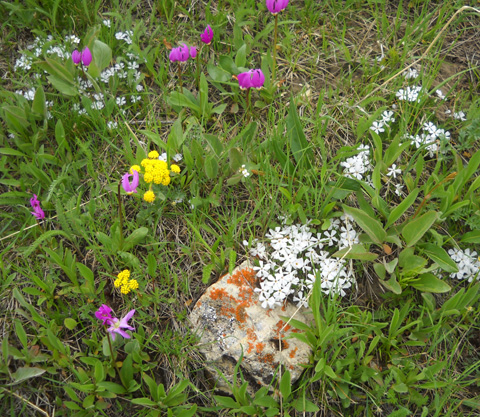
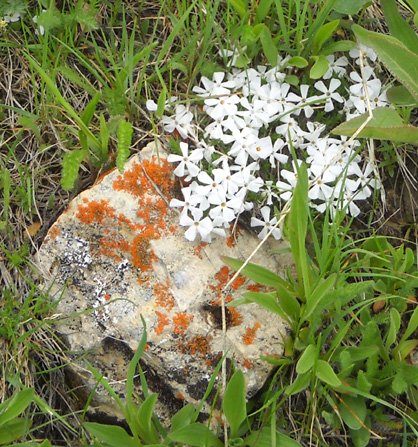
White Alpine Phlox
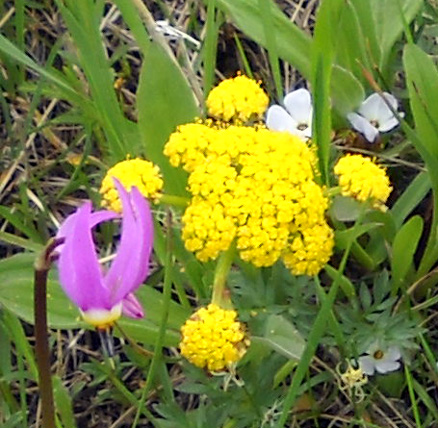
Bright pink Alpine Shooting Star, yellow
Spring Gold, white Alpine Phlox
I saw these white Globeflowers along Upper Sheep Creek:

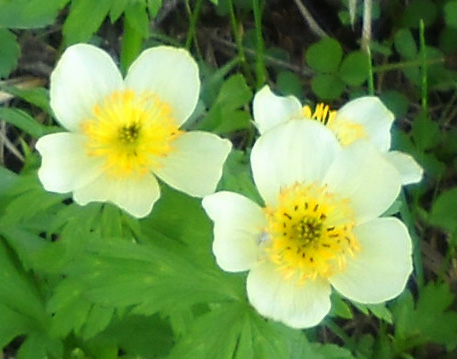
Most of these flowers (and more!) can also be seen in the Dry
Fork area -- through the drainage as well as going up the
ridge to Riley Point. Here are some photos I took from that area
on race day:
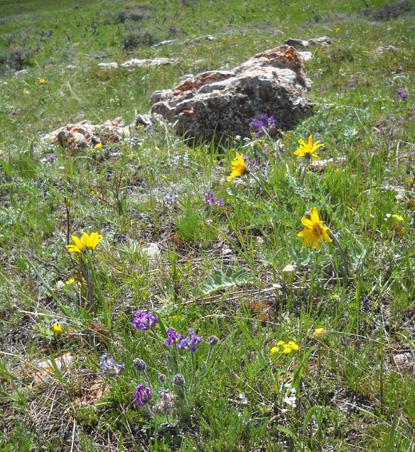
Above and below: purple Penstemon and
yellow Arrowleaf Balsam Root
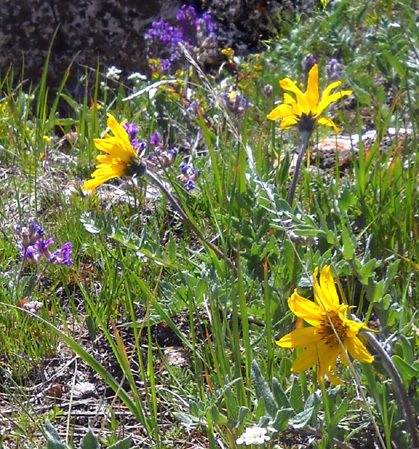
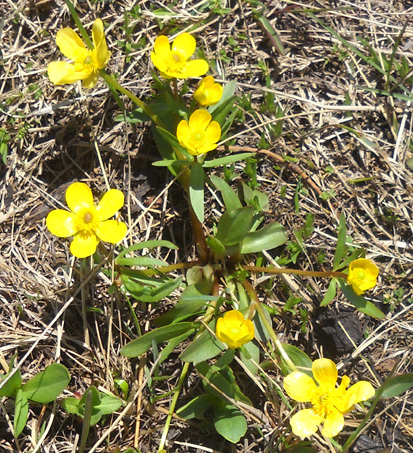
A type of Cinquefoil? Subalpine Buttercup?
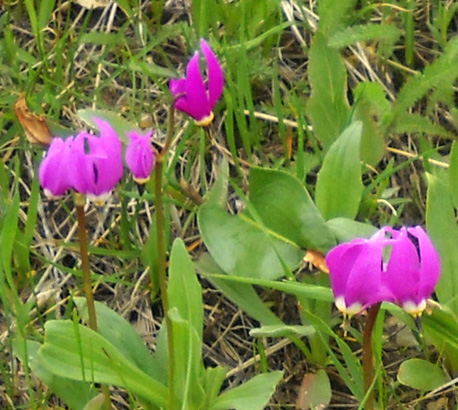
Alpine Shooting Stars
I didn't hike to as many locations along the Bighorn course this
year as previously so there are probably other species of
wildflowers I missed -- and I didn't take pictures of
every kind I saw, either. Even during a "late" spring, there are
many types of wildflowers to enjoy in the Bighorns.
Our next destination is Silverton, CO in the beautiful San Juan
Mountains. We see even more wildflowers there in July. Some are
the same species as the ones above but some are different
because of the location (farther south) and timing (early
summer). I featured photos of many typical Rocky Mountain summer
wildflowers in three entries in the
2007 journal (July 31, August
3, and August 4) if you are interested in seeing them. I'll show
a few more pictures of wildflowers from various locations this
summer but I probably won't do another wildflower photo essay
this year.
Now we're headed to Silverton. I hope to have lots of scenic
photos and some interesting stories from our runs/hikes in the
San Juans and from the Hardrock Hundred race in the next couple
of weeks.
Happy trails,
Sue
"Runtrails & Company" - Sue Norwood, Jim O'Neil,
and Cody the Ultra Lab
Previous
Next
© 2010 Sue Norwood and Jim O'Neil





























